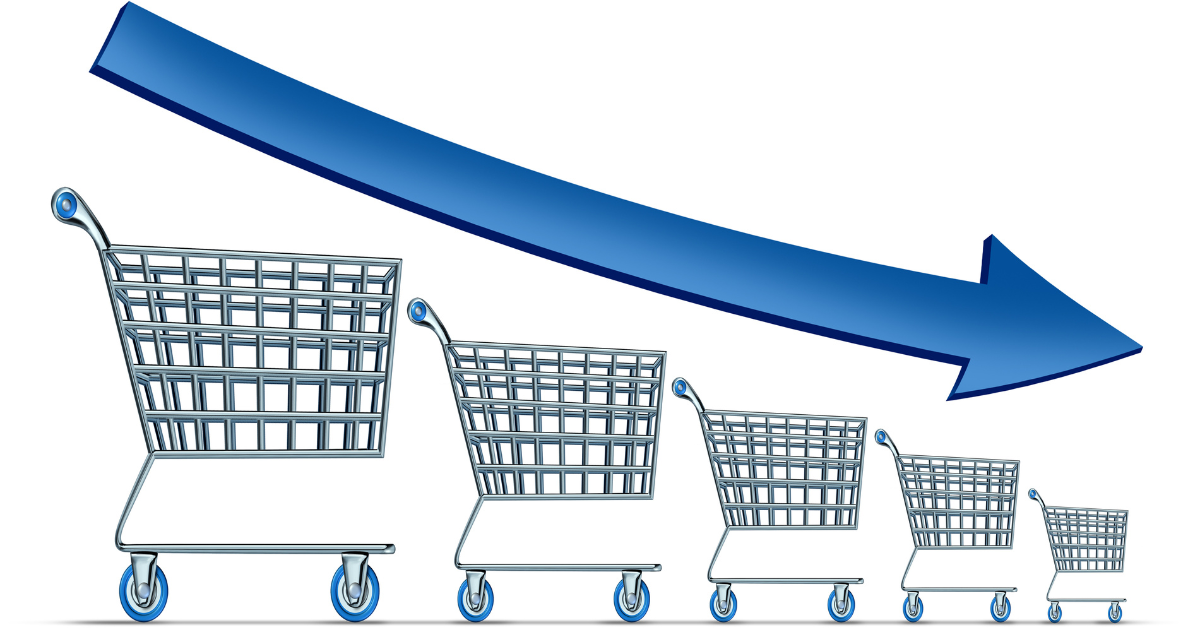
©wildpixel via Canva.com
US Retail Spending Dips in October Amid Record Interest Rates
November 15, 2023
For the first time since March, American retail expenditure witnessed a downturn in October amidst soaring interest rates higher than anything we’ve seen for over two decades.
The Commerce Department revealed on Wednesday that retail sales, while adjusted for seasonal trends but not for inflation, dropped by 0.1% in October from September. Despite being the first recorded monthly decrease since March, the dip was smaller than predicted by economists. October’s fall in consumer spending could be an early indication of a sluggish economy. Higher borrowing costs, coupled with mounting credit card debt, are putting a squeeze on American consumers.
Big-Ticket Sales Decline
The decrease in October’s sales was partially attributed to a slump in sales of some high-value commodities. For instance, there was a 1.1% decrease in car purchases from September to October, with furniture sales seeing a drop of 2% over the same period. Durable goods, items designed to last a minimum of three years, which are frequently bought on credit, also experienced a slide in sales.
Nevertheless, spending in restaurants and supermarkets maintained a reasonable pace, with an increase of 0.3% and 0.7%, respectively, in October.
Federal Reserve’s Measures To Control High Inflation
To counter high inflation, the Federal Reserve has hiked interest rates 11 times since March 2022, putting the brakes on the rampant inflation that peaked last year at a level not seen in four decades.
Following a summer of powerful economic growth, Federal Reserve Chair Jerome Powell, along with other central bank officials, have communicated the necessity for the economy to further decelerate to ensure inflation aligns with the 2% target.
The Positive Ramifications
The recent retail sales report presents a promising outlook for the Federal Reserve since it indicates that consumer spending is neither stubbornly strong nor rapidly accelerating. Furthermore, the decline is moderate, suggesting there isn’t any immediate sign of significant economic frailty.
Despite economic uncertainties, American consumer behavior in areas like the Magnificent Mile shopping district in Chicago and at popular department stores like Bloomingdale’s suggests resilience. As such, many believe that American consumers still possess the financial capacity to keep the wheels of economic expansion turning.
Recent News
Premium and Healthier Food Options Gain Traction
As consumers become more mindful of their spending, the global sales of cooking ingredients and meals saw a notable increase of 4.4% in 2023, driven by inflation and higher commodity prices, according to Euromonitor International. This trend underscores a shift in consumer behavior towards more economical choices while still showing a preference for premium, healthier, and environmentally sustainable options.
Dairy Manufacturers Inc. Issues Voluntary Recall of Baby Formula
In a significant move, Dairy Manufacturers Inc., a Texas-based company, has initiated a voluntary recall of several baby formula products after they were found to be noncompliant with U.S. Food and Drug Administration (FDA) regulations. The recall encompasses all lot codes of three specific products: Crecelac Infant 0-12, Farmalac 0-12, and Farmalac 0-12 Low Lactose. This announcement was officially published on the FDA’s website on Saturday.
Fitness Equipment to Become $18.4 Billion Market
The global fitness equipment market is projected to reach $18.4 billion by 2033, growing at a CAGR of 3.02% from 2024 to 2033, according to Allied Market Research. Key drivers include the integration of Internet of Things (IoT) technology in fitness devices and the rise of corporate wellness programs. IoT-enabled equipment captures workout metrics in real time, enhancing user engagement and offering personalized insights. Corporate wellness initiatives promote physical activity in the workplace, increasing demand for fitness equipment in corporate gyms.
Walmart Ends Partnership with Capitol One
Walmart has officially ended its consumer credit card agreement with Capital One, marking a significant shift in the retail giant’s financial partnerships. This decision follows a series of disputes over customer service issues that culminated in a legal battle and a federal judge’s ruling.

